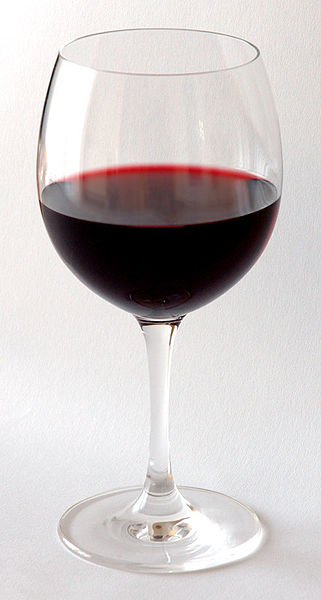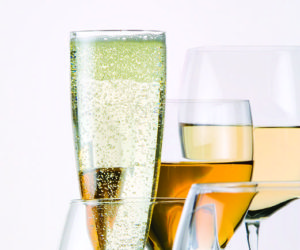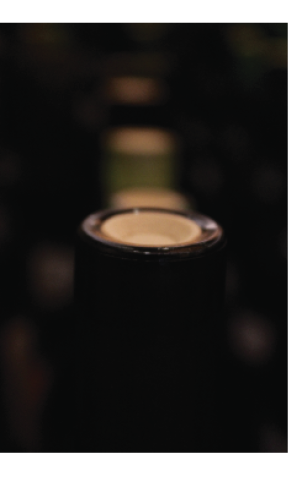 Making the perfect wine requires a combination of experience, skill, excellent grapes and good fortune. Skill and experience are things you can acquire over time. But finding the perfect grapes is truly a difficult task. Whether you’re growing your own grapes, buying grapes or buying concentrates, rarely do you get the exact flavor you want from the grape juice in your fermenter.
Making the perfect wine requires a combination of experience, skill, excellent grapes and good fortune. Skill and experience are things you can acquire over time. But finding the perfect grapes is truly a difficult task. Whether you’re growing your own grapes, buying grapes or buying concentrates, rarely do you get the exact flavor you want from the grape juice in your fermenter.
In operating my retail shop, I find that inexperienced winemakers often believe that all you can do is add yeast to the must and leave the rest to the Wine Gods. They sanitize fermenters, top up carboys and maybe even add some oak chips, but that’s about it. They don’t understand how easy it is to fine-tune a batch and create a flavor they love — even after the wine is in the fermenter!
The most important thing is to open your mind to the creative process. Before you begin, spend some time considering what you want each batch of wine to be. Most winemakers think along the lines of the traditional wine styles, like an oaky Chardonnay from California or a traditional Grand Cru from Burgundy. These are terrific wines, but you might also enjoy some sort of “crossbreed.”
The solution: Simply imagine what you want this wine to be and then go about creating it. Among the most common flavor characteristics to consider are: alcohol strength, acid, tannin, oak, fruit aromas and flavors, body and sweetness.
What follows are my suggestions for personalizing the flavor of your wine. Most of these methods are things you can do after the wine is done fermenting, but before you bottle it. In fact, I find it easier to decide what to do after the wine is about three to six months old. By that time, the wine has settled into something that resembles its finished flavor profile.
With most of these adjustments, it is good to go slow, add a little, taste the wine, and then add more if you want. You can always add more flavor, but it is difficult to take flavor away if you have added too much. A great way of determining what you want to add to your wine is to compare your wine before additions to another wine that has the characteristic that you like. This should help you decide what you want to add to your wine.
ALCOHOL:
When using fresh grapes, it’s common to get fruit that’s slightly low in sugar content. “Chaptalization,” which means adding a little sugar, honey or grape concentrate, will allow you to increase the alcohol content to get the proper balance in your wine. While this is prohibited in Italy and California, it is perfectly acceptable in home winemaking (and in France, by the way).
This adjustment is best done when you first add the yeast to your must. Measure your specific gravity and add the sugar as you see fit. In a five-gallon batch, a pound of sugar, whether it’s honey or table sugar, should raise the ABV (alcohol by volume) roughly three-fourths of a percent. Go easy, as too much alcohol is as bad as too little. Avoid going above 13 percent alcohol by volume (about 25° Brix).
ACID:
Acid is what makes wines taste tart. It also contributes to their “structure,” so they’re not flabby and lifeless (tannin, glycerol and residual sugars are compounds that also impart structure). In most wine kits, the acid level is a little on the low side, to give you a faster-maturing wine. You can use a titration-method acid-test kit to measure the acidity of the juice or concentrate. If your titratable acidity (TA) is, say, 4 percent (4 g/L) and you want to bump it up to 6 percent, you can adjust it before you pitch the yeast.
When making fruit wines, acid levels are normally very low, and yeast will frequently not ferment the wine without a significant increase in acid content. In these cases, testing the must with a TA kit — again, before you add the yeast — will help you to determine the amount of acid to add. You may still add more acid later from a flavor standpoint. (You can buy one of these simple kits at any good home winemaking supply shop.)
There are three types of acid in powder form. Tartaric acid is the primary acid in grapes. Citric acid is the main acid that comes from oranges and lemons. Malic acid is the leading acid in apples and pears. You can also buy an acid blend that’s a combination of these three acids, normally blended in equal portions.
To increase your wine’s acidity, I would suggest adding about 1/4 teaspoon per gallon to start. Use a blend or choose the acid you think best flavors your wine. Tartaric acid works best for grape wines; citric acid is good for mead; and a blend of all three acids suits fruit wines.
A note on timing: It’s best to adjust acid before you pitch the yeast. Otherwise, yeast that have acclimated to one acidity level may react poorly to a sudden acid shock. This is particulary true if your wine will undergo malolactic fermentation; malolactic bacteria are exceedingly sensitive to acid conditions.
You can also reduce the acidity if your wine is too tart. Potassium carbonate is very effective in reducing overall acidity, and will not give your wine a chalky taste like calcium carbonate might. Go easy with it, since it reduces acidity with a small addition. Start with 1/2 teaspoon for a five-gallon batch and add in 1/2 teaspoon increments until you’re satisfied.
TANNIN:
Tannin is the naturally occurring astringency found in grape skins, often described as a “sandpaper” feel in your mouth. Tannin is primarily found in red wines, since they usually ferment with the skins. Whites contain a lot less tannin than reds, since they’re often crushed and pressed the same day. Nearly all kit wines are low in tannin, again for a faster maturing process, so many red wines can be improved by adding some tannin to the fermenter.
I would add powdered tannin at the rate of roughly 1 teaspoon of tannin per 5 gallons (19 L). Add the tannin to 2 cups (473 mL) of boiling water to dissolve, and then add about 1/2 cup (118 mL) of the tannin water at a time, gently mixing it into the wine, tasting the wine after each addition, and stopping when the tannin level is about what you want. Tannin flavors do decrease with time, so this addition can be a bit tricky.
OAK:
Oak barrels are expensive and difficult to use in batches less than 60 gallons (227 L). As a home winemaker, oak chips, oak powder or liquid oak flavoring can be added get the oak flavor you desire. Again, wine kits tend to be a little low in oak flavor, so you can add more oak chips to simulate the flavor and aroma that wineries get from aging wine in an oak barrels.
I would add about 1 cup (~237 mL) of oak chips to 2 cups (473 mL) of boiling water, let them soak for a half-hour, and then add the chips and water to your wine. Sample the wine every day, at the minimum, to evaluate the flavor transfer, and siphon the wine off the chips when you think you have enough oak flavor. Oak flavor does diminish with time, so it’s acceptable to slightly over-oak.
Oak chips and powder come in several different types, including untoasted American oak, toasted American oak, and French toasted oak. They all will give a different flavor to your wine, so smell them before you buy and pick the one that best suits your style.
FRUIT:
Regardless of the wine you are making, you may want to increase the fruit flavor and aroma. Small bottles of natural fruit flavoring are available that have no sugar, just the great fruit aroma. These can be added to taste just a few days before bottling.
Available flavors inclue blackberry, raspberry, cherry, blueberry, boysenberry, peach, cranberry, mango, hazelnut, apple and apricot. The flavors are strong, so a little goes a long way here. I’d start with two ounces for a five-gallon batch.
Choosing a fruit flavor is a matter of personal taste. Still, I’ll make two suggestions: Peach goes nicely with a Chardonnay, while blackberry adds a fine flavor to a Merlot.
BODY:
If your wine has a thin taste, you can add a body builder called “finishing formula” (glycerin). This is a thick, clear liquid that adds body and a small amount of sweetness to the wine. It also can mellow out some harsh flavors. Use it sparingly, as a little goes a long way. Glycerin is added to taste, so I would add it in increments of about 1 ounce (30 mL) per 5 gallons (19 L) of wine. Taste and add more if you like.
SWEETNESS:
If your wine is too dry when you are ready to bottle, you can add sweetness to the wine to bring it up to the level that you would like. There are several different ways of adding sweetness to your wine.
Some wine kits contain a finishing pack, which is a liquid concentrated grape sugar. You could also buy “wine conditioner,” a liquid sugar concentrate combined with sorbic acid, which prevents wine from re-fermenting in the bottle.
You can make your own sugar concentrate by boiling a cup of water with two cups of sugar. If you make your own sweetener, you must add Sorbistat K (potassium sorbate and sorbic acid) to prevent the sweetener from starting a re-fermentation. You should also add some campden tablets (potassium bisulfite) to inhibit oxidation.
Remember, this is your wine! You’re limited only by your imagination. Take a sip from the fermenter, and if you think adding a flavor will improve the wine, give it a try and have fun!
Flavor Overview
• Alcohol: Add sugar, honey or concentrate to increase the alcohol by volume. Don’t go above 13 percent ABV.
• Acid: Add tartaric, citric, malic or blend; start with 1/4 tsp. of powder per gallon.
• Tannin: To increase the astringency, add powdered tannin at 1 tsp. per 5 gallons (19 L).
• Oak: 1 cup (237 mL) of chips should flavor a batch in a few days.
• Fruit: Natural flavorings come in many varieties; start with 2 oz. (60 mL) for 5 gallons (19 L).
• Body: Add glycerin to your batch in 1-oz. (30 mL) increments.
• Sweetness: Use a “finishing pack,” wine conditioner or make your own sugar concentrate to sweeten the wine.






